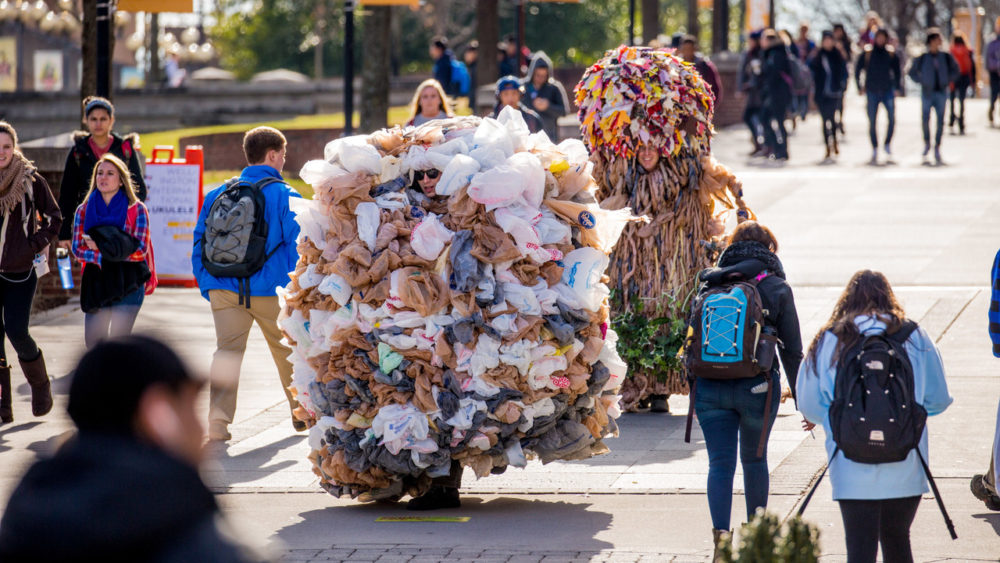Refuse
The first step to handle waste should be to reduce the amount that’s made in the first place. If you’re given the option of taking an item that you don’t need, the best option is to refuse it. Once waste is created, all options to deal with it require energy and resources. Some options are better than others, but it’s better to just avoid creating waste in the first place.
Examples:
- Refuse a plastic bag at the grocery store if you are able to carry the items by hand or by bringing your own reusable bags.
- Refuse plastic utensils and sauce packets if you are taking food home and can use your reusable utensils.
Reduce
Similarly to refusing, reducing stops trash before it’s even created. Reducing the amount of trash you create, like all aspects of sustainability, isn’t about being perfect. So if you can’t or won’t completely refuse an item, reducing the amount of it you use is much better than nothing.
Examples:
- Only buy the amount of something that you’ll actually use.
- If you decide to buy something, try to get it with the least amount of packaging as possible.
Reuse
If you buy an item that comes in packaging, reusing the container it came in can be a great way to keep it out of the landfill. Don’t be afraid to think outside the box. Just because an item doesn’t get use in its current state doesn’t mean it has to stay that way!
Examples:
- Old (and cleaned) pasta sauce jars, yogurt containers, and plastic take-out boxes can be used for storing leftovers.
- Save cardboard boxes from online orders to use when moving, to put presents in, or to store things in.
- Turn old t-shirts into reusable grocery bags instead of putting them in the trash.
- If you’re good at sewing, alter clothes that you don’t like the fit or style of instead of throwing them away.
Recycle
Recycling is a better option than throwing something away, but there’s a reason it isn’t listed first. It still takes energy to recycle an item and it has to be transported to and from the facility that recycles it. Items also have to be reasonably clean to be recycled, and not only will contaminated items not be recycled, but they can also prevent the items around them from being recycled.
Examples:
- Recycling a clean, plastic container that is no longer able to be used for anything else because it is broken.
- Recycling an empty bottle after rinsing it thoroughly.
Rot
Composting is a great alternative to throwing things in the landfill. It provides the right environment for organic materials (like food and garden waste) to be able to properly decompose. Plus, its great for gardens!
Examples:
- During orientation in the summer, incoming UT students ate off of compostable plates with compostable utensils, and so almost everything but their drink cups were able to be composted.
- Putting veggie scraps in the compost bin instead of in the trash.
